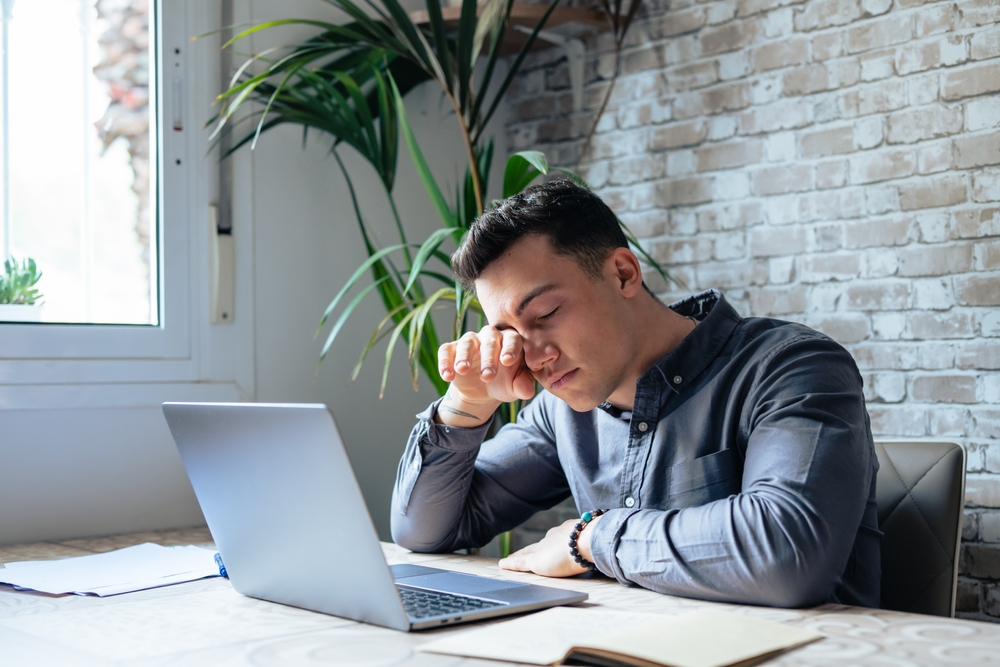
Dry eye syndrome is a prevalent condition that affects millions globally. Despite its common occurrence, there are many myths surrounding this condition.
Debunking common dry eye myths and shedding light on the truth behind them can help you understand this condition better, seek treatment, and prevent potential complications. Keep reading to learn more about the 5 common myths about dry eye syndrome.
Myth #1: Dry Eye is All About Dryness
Truth: Dry eyes are only one of the symptoms of dry eye syndrome. Other signs and symptoms include:
- Eye redness
- Blurred or double vision
- Eye fatigue
- Difficulty wearing contact lenses
- A stinging or burning sensation
- Stringy mucus around or in your eyes
- A gritty or scratchy feeling like something is in your eyes
If you’re experiencing dry eye symptoms, see your eye doctor at Simone Eye Center. They’ll establish the reason behind your symptoms and provide the correct treatment to help you find relief.
Myth #2: Only Older Adults Develop Dry Eye Syndrome
Truth: While dry eye is more common in older adults, anyone, including children, can get dry eye syndrome. Dry eye happens when your eyes produce insufficient tears or poor quality tears that evaporate rapidly.
People over age 50 are more likely to develop dry eye because tear production naturally tends to decline with age. Additionally, older adults usually take medications for various conditions that may exacerbate dry eyes or have dry eyes as a side effect.
These medications can include diuretics, certain antidepressants, and antihistamines. At the same time, different reasons can contribute to the development of dry eye syndrome at a younger age, including too much screen time, LASIK, contact lens wear, dehydration, allergies, and blepharitis or inflammation of the eyelids.
Some autoimmune disorders can also cause poor or inadequate tear production, including Sjorgren’s syndrome, lupus, and arthritis. Additionally, people in certain environments are more at risk of getting dry eyes.
For instance, exposure to smoky, dry, or windy environments may worsen or contribute to dry eye syndrome.
Myth #3: Dry Eye is Not Serious
Truth: Dry eye is not just a minor inconvenience. It can cause lasting damage.
Dry eye syndrome is typically a progressive condition that can worsen if not controlled. Without treatment, chronic dry eye can cause significant discomfort and visual disturbances that may affect your productivity and overall quality of life.
Over time, it can also make you more prone to eye infections. Severe dry eye can damage your cornea, the clear dome-shaped layer that covers the front of the eye, and impair your vision.
In extreme cases, untreated dry eye can lead to vision loss. If you’re experiencing dry eye symptoms, it’s crucial to seek prompt treatment from a qualified eye doctor.
Proper treatment will ensure clear, comfortable eyes and prevent the condition from worsening and causing serious complications.
Myth #4: All Eye Drops Work the Same
Truth: Not all eye drops are equal. Also called artificial tears, eye drops help lubricate and keep your eyes moist, relieving dry eye symptoms.
However, they’re made with different ingredients to address a variety of issues. The best eye drops for you will depend on what’s causing your dry eyes and the severity of your condition.
For example, if you have mild dry eyes and only need to use eye drops occasionally, then eye drops with preservatives are likely safe. The preservatives discourage the growth of bacteria once you open the bottle.
However, these eye drops can irritate your eyes if you apply them often. So, preservative-free drops are usually recommended for people with moderate to severe dry eye who need to use eye drops more than 4 times a day.
If artificial tears are not providing sufficient relief, gel-based drops or dry eye ointments could be more helpful. They have a thicker formulation and can be a better option than regular eye drops for people with severe dry eye.
However, the thickness can cause temporary blurriness, so they’re typically used before going to bed rather than during the day. It’s always a good idea to talk to your eye doctor first so they can determine the root cause of your dry eye and the most effective eye drops for you.
Myth #5: More Drops Means Better Relief
Truth: Eye drops are a quick fix to dry, irritated eyes. Despite their benefits, overusing them can cause issues such as:
Irritation
Some eye drops, particularly those with preservatives, may cause irritation or allergic reactions when overused.
Mask a More Serious Issue
While eye drops alleviate dry eye symptoms, they may not go to the root of the problem. Overusing eye drops can make it harder to detect if there’s an underlying condition that requires medical attention, such as pinkeye, eye strain, blepharitis, or allergies.
As a result, the condition may continue worsening.
If you find yourself reaching for your eye drops more often than you’re supposed to, it’s time to see your ophthalmologist or optometrist. They’ll establish the cause of your dry eye and provide the correct treatment.
Lasting Relief is Within Reach
At Simone Eye Center, we believe that knowing the truth behind dry eye syndrome is crucial to ensure proper treatment. Our expert eye doctors have years of experience successfully treating dry eye and can help you find long-term relief.
Are you tired of battling dry eye syndrome? Schedule your appointment at Simone Eye Center in Macomb Township or Warren, MI, today. You deserve clear, comfortable, and healthy vision.



